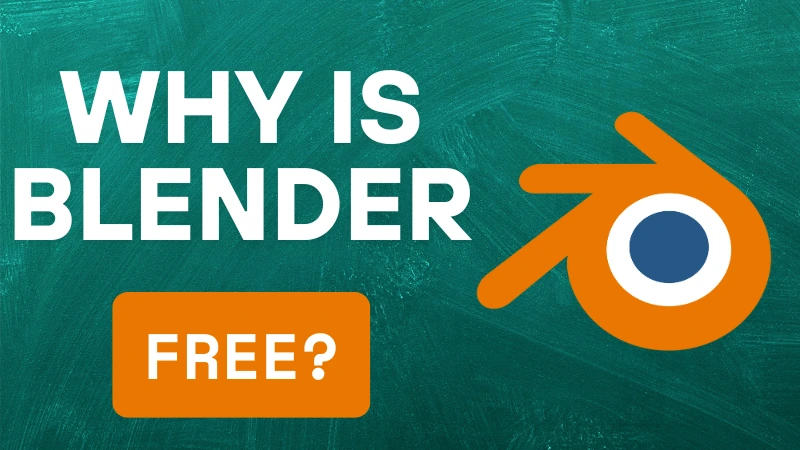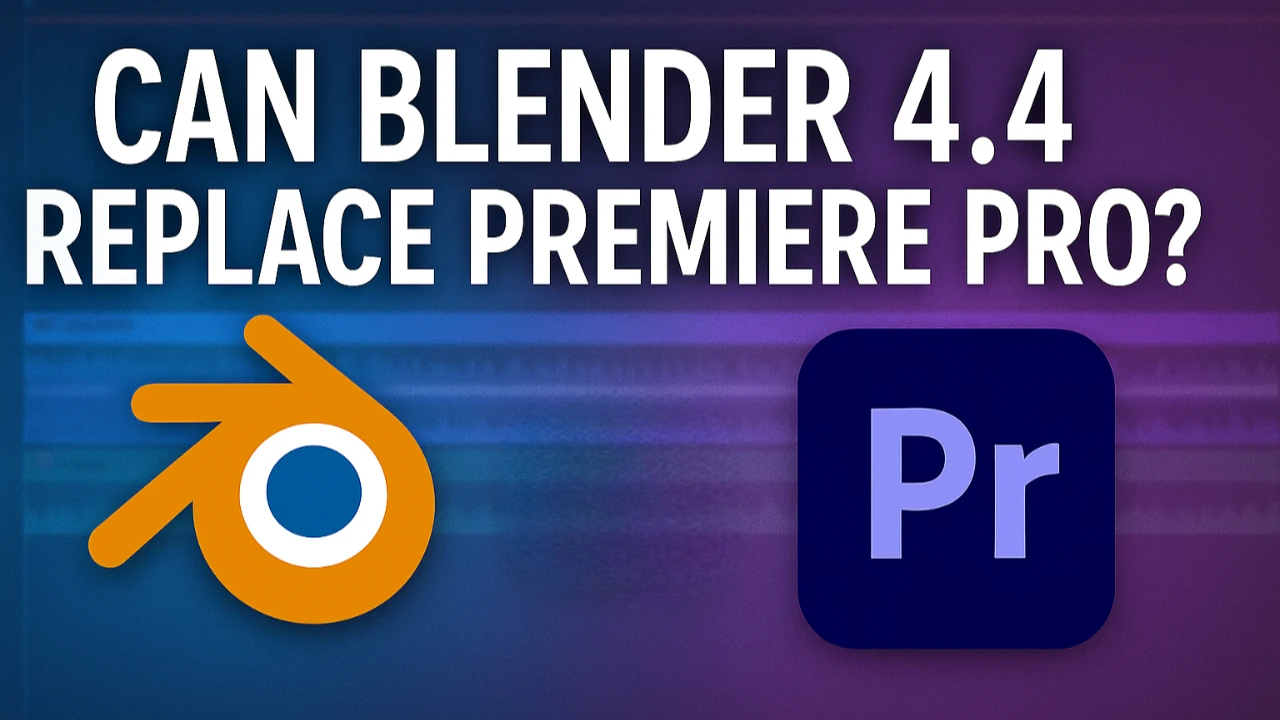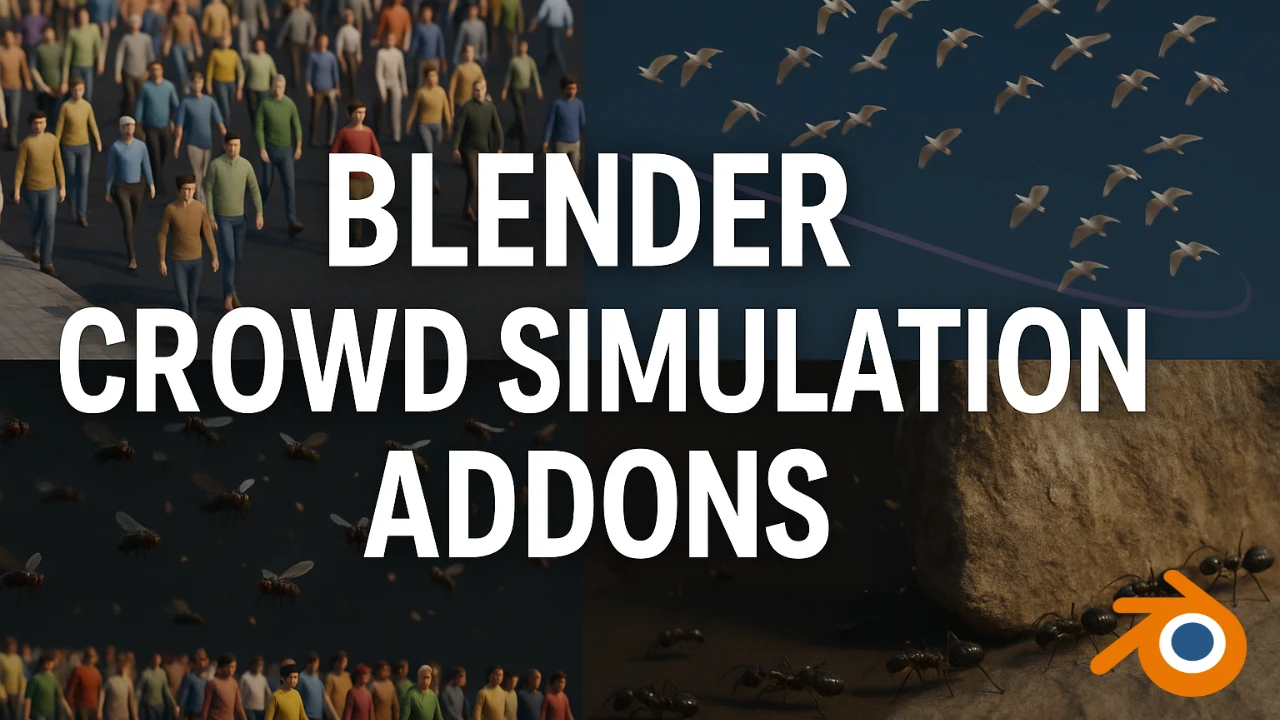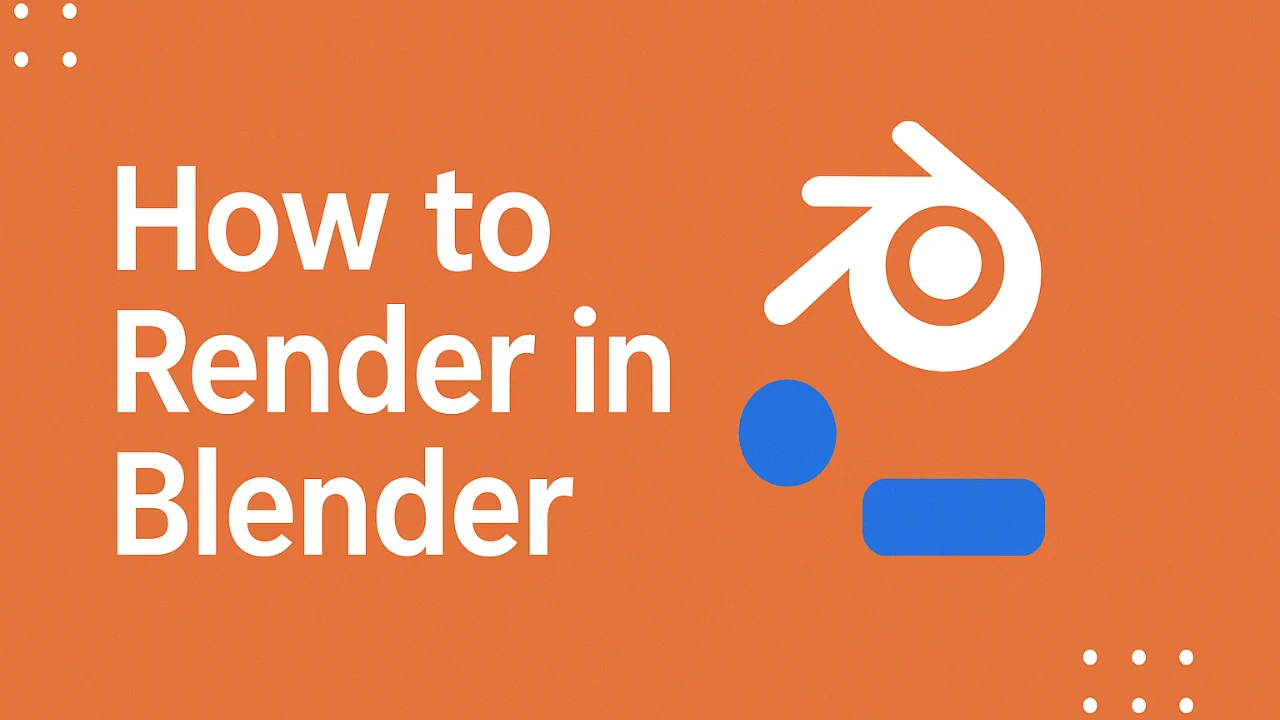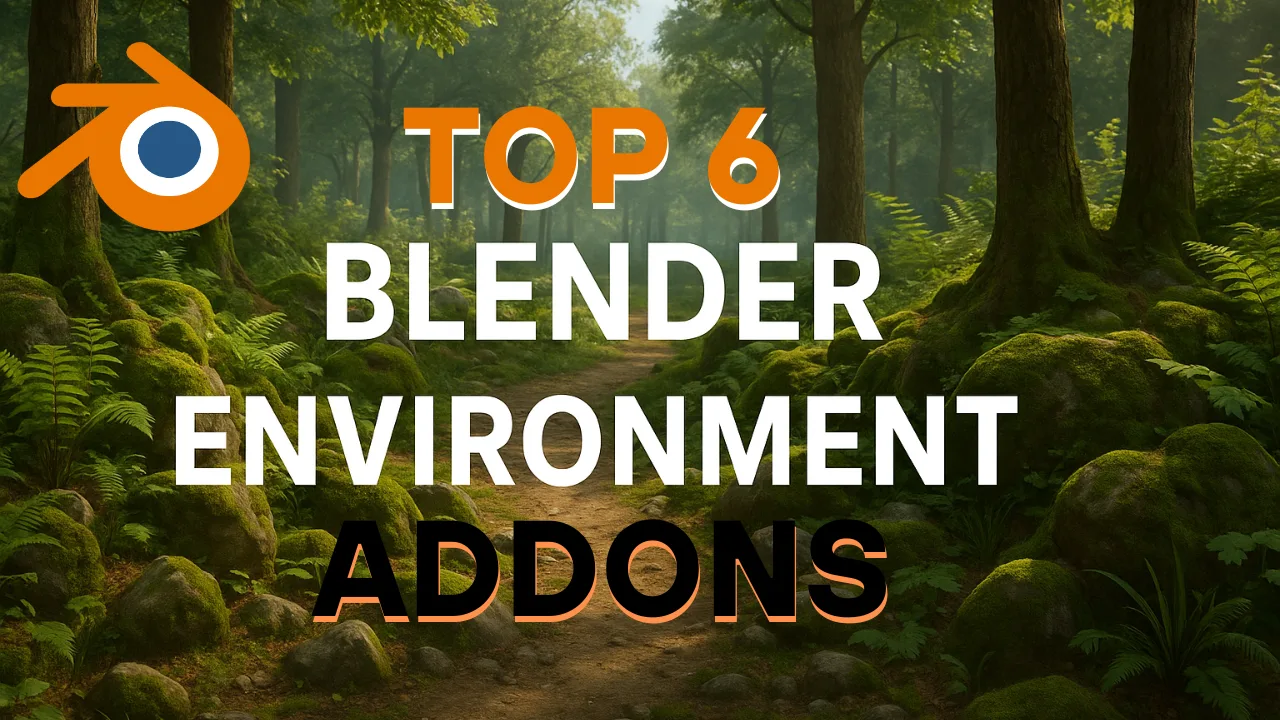Table of Contents
At Blender Con they announced that AI is coming to Blender. So what is it going to look like? Is this just another hype grab? But what does AI in Blender really mean for users? Is it another buzzword or a groundbreaking feature?
Because when I first heard that Blender was adding AI I was not happy. But now that I understand how it’s going to be implemented, I’m very excited.
Blender’s AI Philosophy
So what is this implementation going to look like?
Well, our main source of information is from this presentation at Blender. And the whole thesis behind Blender’s AI is to empower artists, to create a tool set that doesn’t take away from the process but rather helps with tedious tasks and technical details.
Understanding How AI Works
So what is that going to look like?
Well, to understand, let me explain how AI works.
Imagine that you’re opening a restaurant and you want to create your signature dish. So you do some testing and create a lasagna recipe that is perfect. That recipe was pretty easy to make. It took 10 hours to perfect, and it only does one thing—it shows your cooks how to make your signature lasagna.
Now imagine that you hire an assistant chef who went to culinary school for 4 years and all he did the entire time was study recipes. So you ask him to show your cooks how to make the lasagna and he does it in seconds, without having to prepare a recipe because of his studies. But he also spent 10,000 hours studying recipes to get to this point.
Now if you only needed him to show your cooks how to make the lasagna, it would make much more sense just to use the recipe that took 10 hours to make. But he could also make a large variety of other dishes and do it easily.
This is the difference between traditional algorithms and AI. AI is extremely powerful but using it where it isn’t needed is a massive waste of time—because you wouldn’t hire a chef to do the job of a recipe.
Sometimes you can use other tools to do what you could do with generative AI. You don’t need AI where a traditional algorithm already works.
Where Is AI in Blender Needed?
There are three areas that were specifically mentioned in the presentation. But there are also three that weren’t directly mentioned but might be on the horizon.
Confirmed AI Features in Blender
1. Denoising
Blender already has AI. And uh, yeah, I mean it’s in the Open Image Denoiser, for example. This is awesome—but it’s already been implemented.
The reason it was mentioned is because Blender was also looking at leveraging AI to improve temporally stable denoising and to make it more efficient.
What Will It Look Like?
For denoising, it’s just going to look the same. It’ll just be in the background speeding up your renders.
How Will It Change Your Workflow?
Because it’s running in the background, AI denoising won’t change your workflow at all. You don’t need to learn a new tool. It just allows you to spend less time rendering and more time creating.
Why Use AI Here?
The very first AI image generators used a method called diffusion and it’s still very popular today. It essentially uses noise to generate images. Basically—this is very oversimplified—it takes an image, adds a ton of noise to it, then looks at your prompt and denoises that image in a way that matches your prompt. Blender’s Open Image Denoiser uses similar techniques. However, instead of hallucinating new images, it just cleans up the noise.
Will This Cost Jobs?
This one is pretty obvious. I don’t see AI leading to any job loss. This wouldn’t be any different than adding a more powerful GPU to your computer. It won’t replace artists—but it does help to empower them.
2. AI Object Mapping (UV Unwrapping)
This integration is going to be a lot more groundbreaking. It’s AI object mapping.
Whenever you want to add textures to a 3D object you have to create what’s called a UV map that tells Blender how to project 2D textures onto a 3D object.
For instance, a cube has this object map. And this is the one of an icosphere. It’s almost like unfolding origami.
As 3D artists, we have to create object maps for objects like this or this—which is extremely repetitive and time-consuming—making this a perfect candidate for AI.
We already have some automatic features like Smart UV Project—but it could use a lot of improvement.
What Will It Look Like?
We weren’t officially told. But it would make a lot of sense to have this in the UV Unwrap drop-down, similar to the Smart UV Project option—but with increased accuracy and more control.
Workflow Impact
This would change texturing entirely. The con would be the hours of tedious UV editing. Instead, we would have an automatic tool that would allow us to save more time for the creative task.
Why AI Works Better
Unwrapping is complex. Every model is unique, meaning you need to have a more advanced way to handle that variation. This would be a case when having the chef would be much better than the recipe—because he is flexible and can adapt to every new situation.
Will This Cost Jobs?
I do think this could lead to some small layoffs—but only because productivity is increasing, meaning you need a smaller staff to accomplish the same goal. However, we’ve seen these same kind of layoffs in history every time there’s been new technological progress.
3. Python Scripting With a Large Language Model
The third confirmed AI integration is extremely ambitious.
Imagine a large language model that can help people within the Blender Text Editor to write Python scripts. This is something that would be a much bigger change.
We’ve seen the same sort of tech in add-ons like Blender GPT. But having a native integration would be much more powerful.
What Will It Look Like?
If we use other Python language models as a loose guideline, they allow you to write a prompt and then the AI will write a Python script that adds whatever you asked for into Blender. So the implications of this are huge.
Will It Fit Blender’s Philosophy?
Remember Blender’s thesis behind this AI integration is to empower artists. Francesco literally said so. You didn’t hear me saying that everything is going to be one big AI. But you saw written tiny it says like “Empower artists.”
I believe that a large language model that successfully does what these other add-ons are trying to do would not be in line with the guidelines he laid out in his talk. But I don’t know what Blender has in mind.
Potential Future AI Tools in Blender
1. Image Texture Generator
Image textures essentially allow you to bring the real world into Blender. We don’t want to replace that.
But there have been so many times when I’ve taken a picture or downloaded one and wanted to use that as a texture—but I don’t have a displacement, rust, or bump map. I’m able to sort of get by by using the color information to sort of get the desired effect.
If we had an AI model that could analyze the image and generate each of those different maps based on the color information—that would be a huge timesaver.
Implementation Concept
The implementation could just be included in its own add-on similar to Node Wrangler. With the Node Wrangler add-on installed, you can just press Ctrl+Shift+T to create an image texture node tree. With this AI model, if you don’t have an image for each of the four channels, you could just have a little popup that comes up and you have the option to generate those images.
2. Weight Painting and Retopology
Both of these are very time-consuming and tedious—which makes them perfect candidates for AI.
In Blender we already have remeshing capabilities. Those are great.
But if you actually want to create a character with good topology that’s ready to rig and animate, then you’re looking at hours of tedious slow retopology.
This would also follow the motto of empowering artists. No one wants to weight paint or retopologize models. You’re just saving time on a tedious monotonous tasks and allowing people to create better renders.
3. AI Assistant
Now hear me out.
We’ve seen something similar to this with the add-on Blend. which basically just adds an AI personal assistant that can guide you through technical details for what you’re trying to accomplish.
In a talk at Blender Con, Andrew Price—more commonly known as Blender Guru—mentioned the things that Blender could improve about their UI. And there’s a lot.
Troubleshooting With AI
Specifically, he talked about troubleshooting. This is something we deal with all the time as 3D artists. There will be an object with artifacts or that isn’t rendering properly, and we’ll have to spend minutes or hours trying to figure out what’s wrong.
He basically suggested a troubleshooting system that allows you to ask Blender what’s going wrong with an object. And it would say “You may need to apply scale” or “Bevel your edges properly.”
Adding a troubleshooting system like this would be a complex task—something that a traditional algorithm or procedural solution would struggle with. Which is why I think AI could possibly be the best solution.
Final Thoughts
Ultimately AI is a tool. As long as we don’t overhype it by treating it like the devil or our salvation, it becomes much easier to find actual applications for the technology.
All we can do is try our best as artists, leverage the tools we have, and try to make our best work.
FAQs About AI in Blender
Q: Is AI already available in Blender?
Yes, AI-based denoising is already available through the Open Image Denoiser.
Q: Will AI in Blender require learning new tools?
Not necessarily. Many of the planned integrations will run in the background or be added to existing features.
Q: Can AI take over the artistic process in Blender?
No. Blender’s philosophy is to use AI to empower artists, not replace them.
Q: What AI features are confirmed for future Blender updates?
Confirmed features include improved denoising, AI-assisted UV unwrapping, and Python scripting with large language models.
Q: Are there any possible AI features in the pipeline?
Possibly. Ideas like AI-generated texture maps, automated weight painting and retopology, and AI troubleshooting assistants were discussed as ideal use cases.

